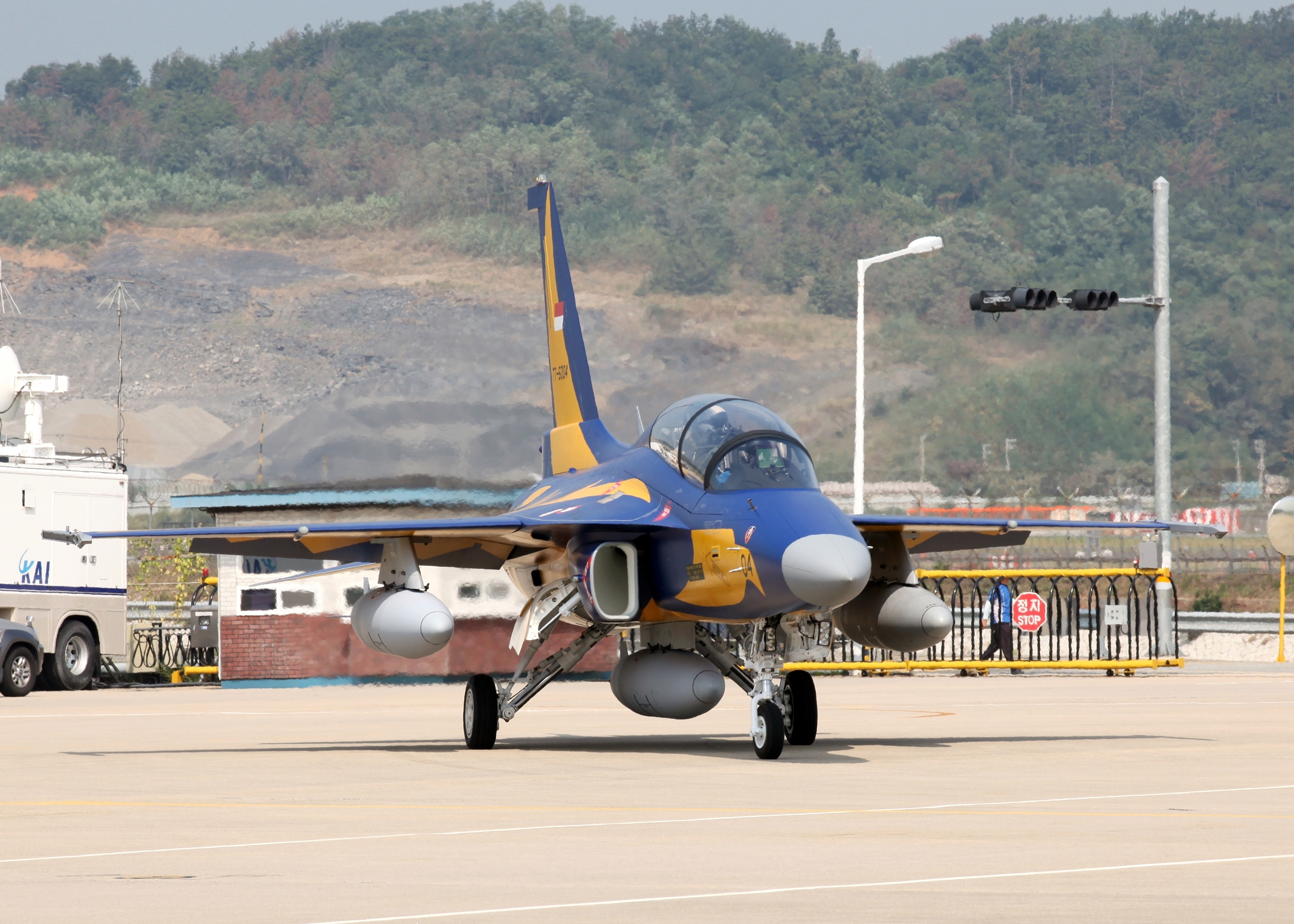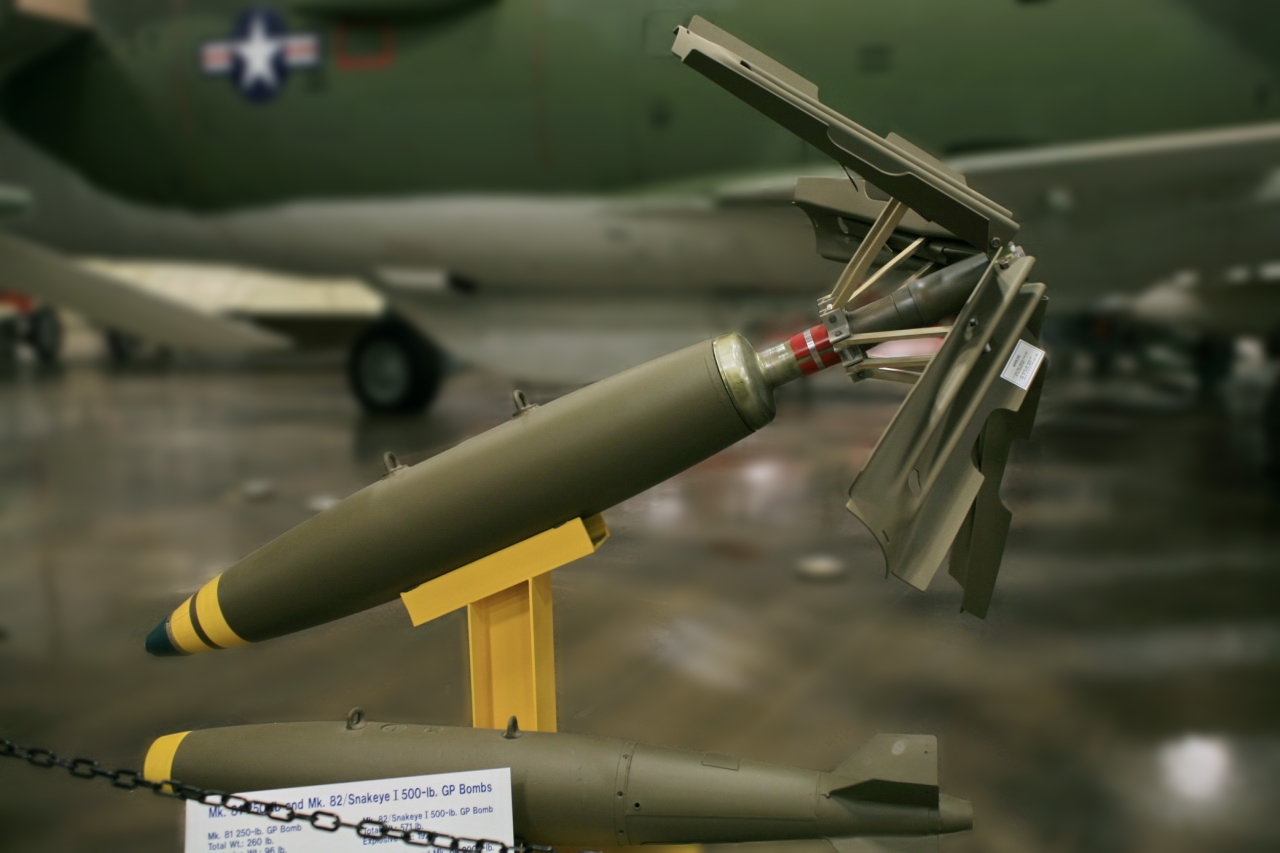|
KGGB
The KGGB (Korean GPS-Guided Bomb), or simply GGB, is a precision-guided glide bomb system, attached to MK-82 conventional general-purpose bomb. The KGGB is capable of striking targets from long-distances and features fire-and-forget capability. It was developed by the Agency for Defense Development (ADD) and LIG Nex1. Design The KGGB is a medium-range air-to-ground guided weapon with improved accuracy and range attached with GPS-aided INS guided kits in conventional general purpose bombs. Mission plan data established on the ground is stored in the Pilot Display Unit (PDU) controlling the KGGB, entered into the fighter-mounted KGGB, and after takeoff, if a bomb is dropped within 103 km of the mission area, the bomb will fly in the air and hit the target. The KGGB kit is equipped with a special wing assembly called ''Flaperon'' that can control flight direction, flight altitude and flight speed in the air. This special wing assembly controls the flight direction by adjusting ... [...More Info...] [...Related Items...] OR: [Wikipedia] [Google] [Baidu] |
FA-50
The KAI T-50 Golden Eagle () is the first South Korean supersonic advanced jet trainer, light combat aircraft, and light strike-fighter developed by Korea Aerospace Industries (KAI) with Lockheed Martin. It is South Korea's first indigenous supersonic aircraft and one of the world's few supersonic trainers."Domestic Light Attack Jets Due in 2013" , December 30, 2008. Development of the T-50 began in the late 1990s, and its maiden flight occurred in 2002. It entered active service with the |
KAI KF-21 Boramae
The KAI KF-21 Boramae (Korean: KF-21 보라매; KF-21 Fighting Hawk; formerly known as KF-X) is a South Korean-led fighter aircraft development program with the initial goal of producing multirole fighters for the South Korean Air Force. The airframe uses stealth technology but carries weapons externally, and features such as internal bays will be introduced later with KF-21EX program. The KAI KF-X is South Korea's second domestic fighter jet development program, following the FA-50. The program is led by the South Korean government, which holds 60% of the program's shares. Indonesia took a 20% stake in the program in 2010 and participates in the program through Indonesian Aerospace since the start of KF-21 development in 2011, and the remaining 20% is held by private partners including the manufacturer Korea Aerospace Industries (KAI). Later, in August 2024, Indonesia's stake was reduced to 7.5% or 409 million USD when the head of the program, the Defense Acquisition Prog ... [...More Info...] [...Related Items...] OR: [Wikipedia] [Google] [Baidu] |
LIG Nex1
LIG Nex1 Co., Ltd. (), formerly known as LG Innotek () is a South Korean aerospace manufacturer and arms manufacturer. It was established in 1976 as Goldstar Precision. LIG Nex1 was previously owned by LIG Holdings Company, which in turn was owned by the LIG Group. In 2013, a consortium led by South Korea private equity firm STIC Investments acquired 49 percent stake in LIG Nex1 for 420 billion Korean won. It develops and produces a wide range of advanced precision electronic systems, including missiles, underwater weapon systems, radars, electronic warfare, avionics, tactical communication systems, fire control systems, naval combat systems, and electro-optics. It is one of the major suppliers of weapon systems for the Republic of Korea Armed Forces, as well as an international exporter of weapon systems. History The company was established on February 25, 1976, under the name Goldstar Precision Industries () as a subsidiary of Goldstar Electronics (now LG Electronics). T ... [...More Info...] [...Related Items...] OR: [Wikipedia] [Google] [Baidu] |
F-15K
The McDonnell Douglas (now Boeing) F-15E Strike Eagle is an American all-weather multirole strike fighter derived from the McDonnell Douglas F-15 Eagle. Intended for the Dual-Role Fighter (DRF) program (initially called Enhanced Tactical Fighter), the F-15E was designed in the 1980s for long-range, high-speed interdiction without relying on escort or electronic-warfare aircraft. United States Air Force (USAF) F-15E Strike Eagles can be generally distinguished from other US Eagle variants by darker aircraft camouflage, conformal fuel tanks (CFTs) and LANTIRN pods mounted behind the engine intake ramps (although CFTs can also be mounted on earlier F-15 variants) and a tandem-seat cockpit. Initially designed and manufactured by McDonnell Douglas, the F-15E first flew in 1986 and production continued under Boeing following the companies' merger in 1997. The aircraft became the USAF's primary strike fighter/interdictor starting near the end of the Cold War, gradually replaci ... [...More Info...] [...Related Items...] OR: [Wikipedia] [Google] [Baidu] |
McDonnell Douglas F-15E Strike Eagle
The McDonnell Douglas (now Boeing) F-15E Strike Eagle is an American all-weather Multirole combat aircraft, multirole strike fighter derived from the McDonnell Douglas F-15 Eagle. Intended for the Dual-Role Fighter (DRF) program (initially called Enhanced Tactical Fighter), the F-15E was designed in the 1980s for long-range, high-speed Air interdiction, interdiction without relying on escort or electronic-warfare aircraft. United States Air Force (USAF) F-15E Strike Eagles can be generally distinguished from other US Eagle variants by darker aircraft camouflage, conformal fuel tanks (CFTs) and LANTIRN pods mounted behind the engine intake ramps (although CFTs can also be mounted on earlier F-15 variants) and a tandem-seat cockpit. Initially designed and manufactured by McDonnell Douglas, the F-15E first flew in 1986 and production continued under Boeing Defense, Space & Security, Boeing following the companies' merger in 1997. The aircraft became the USAF's primary strike fight ... [...More Info...] [...Related Items...] OR: [Wikipedia] [Google] [Baidu] |
Agency For Defense Development
The Agency for Defense Development (ADD, ) is the South Korean government agency for research and development in defense technology, funded by the Defense Acquisition Program Administration (DAPA). It was established in August 1970 under the banner of the self-reliant national defense promoted by President Park Chung Hee. Its purpose is contributing to enforcing the Republic of Korea Armed Forces, national defence, to improving the national R&D capacity, and to fostering the Defense industry of South Korea, domestic defense industry. ADD focuses on core weapons systems and core technology development, and studies major weapons platforms in high-risk and non-economical fields, unmanned and advanced, and new weapon systems for the future. ADD is responsible for first South Korean ballistic missile Nike Hercules Korea-1 aka White/Polar Bear, developed in the 1970s with its first successful test in 1978. ADD is the operator of South Korea's first dedicated military satellite, ANASI ... [...More Info...] [...Related Items...] OR: [Wikipedia] [Google] [Baidu] |
Janes Information Services
Janes is a global open-source intelligence company specialising in military, national security, aerospace and transport topics, whose name derives from British author Fred T. Jane. History Jane's Information Group was founded in 1898 by Fred T. Jane, who had begun sketching ships as an enthusiast naval artist while living in Portsmouth. This gradually developed into an encyclopedic knowledge, culminating in the publishing of ''All the World's Fighting Ships'' (1898). The company then gradually branched out into other areas of military expertise. The books and trade magazines published by the company are often considered the ''de facto'' public source of information on warfare and transportation systems. Based in Greater London for most of its existence, the group was owned by the Thomson Corporation, the Woodbridge Company, then IHS Markit, before being acquired by Montagu Private Equity in 2019. In March 2022, Janes acquired Washington, D.C.-based RWR Advisory Group. Descr ... [...More Info...] [...Related Items...] OR: [Wikipedia] [Google] [Baidu] |
Mark 82 Bomb
The Mark 82 is a unguided, low- drag general-purpose bomb, part of the United States Mark 80 series. The explosive filling is usually tritonal, though other compositions have sometimes been used. Development and deployment With a nominal weight of , it is one of the smallest bombs in current service, and one of the most common air-dropped weapons in the world. Although the nominal weight is , its actual weight varies depending on its configuration, from . It is a streamlined steel casing containing of Tritonal high explosive. The is offered with a variety of fin kits, fuzes, and retarders for different purposes. The is the warhead for the GBU-12 laser-guided bombs and for the GBU-38 JDAM. Over many years Nitro-Chem in Bydgoszcz, Poland was the only provider of certified TNT for U.S. Department of Defense. As of 2021 also the General Dynamics plant in Garland, Texas was providing bombs for the US Armed Forces. The is currently undergoing a minor redesign to ... [...More Info...] [...Related Items...] OR: [Wikipedia] [Google] [Baidu] |
Polish Air Forces
The Polish Air Force () is the aerial warfare Military branch, branch of the Polish Armed Forces. Until July 2004 it was officially known as ''Wojska Lotnicze i Obrony Powietrznej'' (). In 2014 it consisted of roughly 26,000 military personnel and about 475 aircraft, distributed among ten bases throughout Poland. The Polish Air Force can trace its origins to the second half of 1917 and was officially established in the months following the end of World War I in 1918. During the invasion of Poland by Nazi Germany in 1939, 70% of its aircraft were destroyed. Most pilots, after the Soviet invasion of Poland on 17 September, escaped via Romania and Hungary to continue fighting throughout World War II in allied air forces, first in France, then in Britain, and later also the Soviet Union. History Polish Air Force backline Origins Military aviation in Poland started even before the officially recognised date of regaining independence (11 November 1918). The first independent units of ... [...More Info...] [...Related Items...] OR: [Wikipedia] [Google] [Baidu] |





